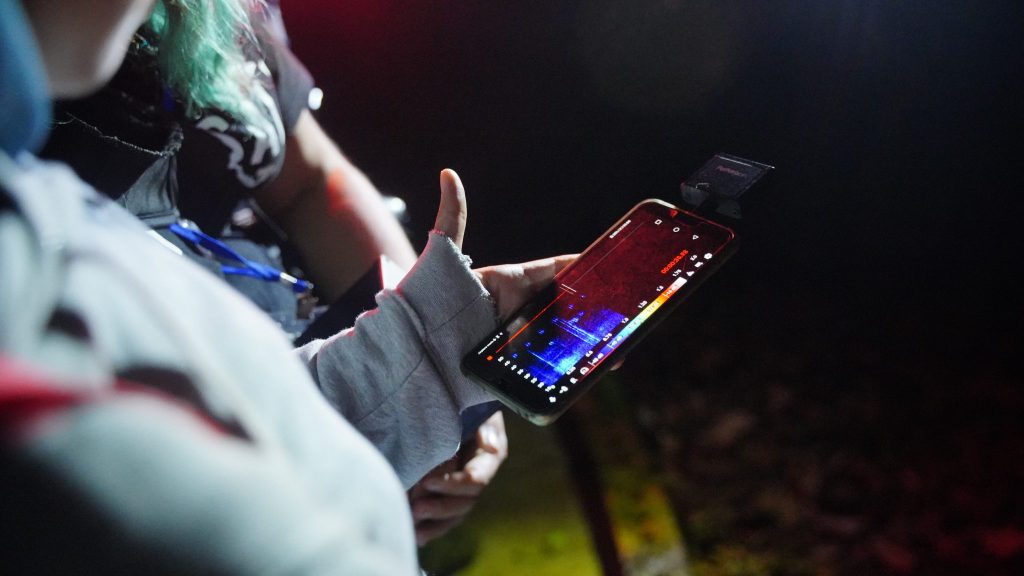
Rainforest diversity is not just something that can be appreciated with the eyes. It is also expressed by a diversity of sounds – the song of birds, the shrill siren of cicadas, the calls of frogs and geckos, and the vocalizations of squirrels and primates are part of the forest landscape.
Bioacoustics, a cross-disciplinary science which combines biology with acoustics is proving to be an indispensable tool for studying and interpreting our natural world. In addition to understanding wildlife ecology, it is assisting scientists in monitoring change brought about by anthropogenic pressures and climate change. For these reasons, The Habitat Foundation is embarking on a long-term bioacoustics research programme based at The Habitat Penang Hill.
In line with efforts to boost capacity in bioacoustics among local researchers, a two-day online bioacoustics/sound analysis workshop was held on the 25th and 28th January 2021 organized by the Malaysian Primatological Society (MPS) in collaboration with the Centre for Conservation Bioacoustics at the Cornell Lab of Ornithology. This training was organized with the School of Biological Sciences, Universiti Sains Malaysia.
A total of 37 participants joined the two-day online workshop, with the option of joining the third day for consultation with Cornell. They were mainly researchers and students working in Southeast Asia who are currently using or plan to use bioacoustics for wildlife studies.


A recent workshop with the Centre for Conservation Bioacoustics at the Cornell Lab of Ornithology is helping to build a firm foundation for The Habitat Penang Hill’s Bioacoustics Research Programme.


On the first day, the participants had the opportunity to get an overview of the different ways bioacoustics can be used through the sharing of five presenters. Dr Priscilia Miard of Night Spotting Project shared her experience of using ultrasound recording devices to detect bats and colugos in Penang and Langkawi. Iza, another PhD student from USM, also shared her use of active bioacoustic survey methods to study gibbon groups in Taman Negara, Pahang.
Bioacoustics has been used to identify changes in Bornean ape calls to serve as early-warning indicators of anthropogenic change. African elephants being monitored with bioacoustics have also been found to warn their herd of the presence of poachers.
On the second day, a quick Raven Pro 1.6 tutorial was given where the participants learnt the basic functions of the software before moving on to Raven Pro 2.0, a beta version which has a powerful Template Detector tool that uses a stereotypical sound clip to detect similar sounds in a lengthy recording.


This bioacoustics workshop is a part of the Habitat Foundation’s effort to promote ongoing learning and to build skills in research capacity. As more capacities are built, this training will be extended to more local researchers in locations where projects or project partners are supported by the Foundation.
In December 2020, Dr Priscilia Miard has also conducted a 3 days hands-on training in bioacoustic monitoring works at The Habitat Penang Hill after a similar workshop was held. The training was done during the day and night to capture both diurnal and nocturnal animal calls.






The recordings made are in the process of being separated into different animal calls and these will then be added to the database for future research. In April 2021, The Habitat Foundation announced a new Master’s Scholarship in Bioacoustics at the School of Biological Sciences, USM. For the two-year Masters by Research, the Foundation will cover registration and tuition fees, a monthly stipend, field costs and equipment. Suitable candidates are invited to apply by 30 May 2021.


